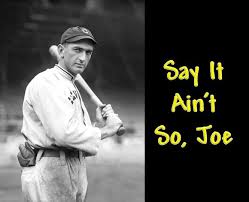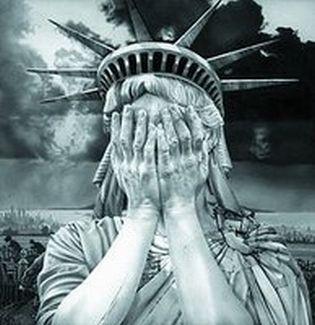03:45 24 SEP 2016 Sandusky Ohio GS Jade Barrett USA correspondent csbnews.org

«I myself am frustrated in just where sports are at. It’s a hard thing when you’re out there working every day, and you know that someone else is cheating and they may not necessarily get caught» – Allyson Felix
The exposure of three of the higher ranking pairs as cheats during the month of September 2015 was cathartic to some, but extremely distressing to others. Many Americans have felt the same sense of pain and disillusionment that the young boy who begged «Say it ain’t so, Joe» after Shoeless Joe Jackson’s Chicago White Sox were discovered to have thrown Baseball’s 1919 World Series.

While the game has its deceptions in the bidding and play, the bridge remains a competition firmly entrenched in fair play, where honesty is not just an essential element, it is simply taken for granted. The nearly entire community of our athletes, might cheat on their diets; cheat on their taxes; or cheat on their spouses; but they will not cheat at cards. Even those previous «guests of the State» are so inclined: «I may have a felony conviction, but I was never accused of cheating at bridge» was said to me during the interview of a well known player.
It is certainly true that the cheats have deceived many players, winning matches and titles that may have not been theirs if played within the rules of our sport. Perhaps they might have won anyway. What is certainly true is that they have perpetrated a fraud on the entire world of the game – and affected many people who do not play at all.
There is an enormous amount of money connected to the game, and while cash prizes do not exist in American Contract Bridge League (ACBL) tournaments, the number of professional bridge athletes continues to rise. More than a few earn well into six figures annually. It is all those that are supported by the game that suffer at the hands of these nefarious characters.

As a Team Leader for our company, I manage two teams of professionals, most of whom derive their income from the game. I also feel personally affected by the knowledge that our teams may have been – and almost certainly were – harmed by those suspected and those who have already confessed to some form of cheating. The investments made by us and our sponsors were certainly damaged by these charlatans whether we played them or not, for every contest they competed in was marred by their participation. In effect, the entire tournament became a sham.
Every bridge event is conducted with a set of rules that are virtually universal. There are minor variations from event to event, from governing body to governing body, but the single constant is the existence of a level playing field that requires all partnership agreements to be disclosed. The bridge community accepts this exceptionally powerful expectation as a given, and therefore is somewhat more vulnerable to the conmen that rarely appear on the scene. It is no surprise that when a pair or team colludes in the creation of secret understandings with the intent to deceive their opponents becomes exposed to the world, the public outcry does not come close to matching the depth of moral outrage that is actually felt.
The unwitting teammates of the villains also suffer greater indignities, for despite their innocence, they cannot help but be splattered by the tar that is poured on their compatriots. While they themselves are free from any wrongdoing, they must withstand the intense scrutiny that comes with the investigation of the criminal element of the team. Some of the voices will challenge their ignorance, failing to believe that they had no idea that something bad was occurring. Others will insult their intelligence. In any event, even when the noise dies down, the ill feelings remain.
That does not begin to address the total amount of whatever the coin of the realm that has been lost. Some teams train for years to have a single shot at a major championship. In addition to the time spent at the table honing their skills, the travel, lodging, entry fees, and time away from their loved ones are included in the investment they have made. When multiplied by the number of entrants that vie for these opportunities, the cost is in the millions; the death of the dream incalculable.
The organizers also suffer. They are entrusted by the rank and file to provide fair and balanced contests, and are held accountable by their memberships for their failure to protect these interests. The difficulty of bringing an ironclad case is underestimated for the most part, made all the more difficult by the lack of communication between the various National, Zonal and World Bridge Organizations that exist. It is also important that innocent players are not assailed, for a false accusation can ruin a reputation and a livelihood for ever. The job of policing the game is not an enviable one.
Perhaps a fine needs to be assessed, one that finances the security that unhappily needs to exist in order to maintain a clean playing environment. If not a fine, then someone might file suit against those who have cost the commune of bridge athletes so dearly. The exclusion from this closely knit and necessarily trusting society is inadequate recompense for the damages done to their victims.
